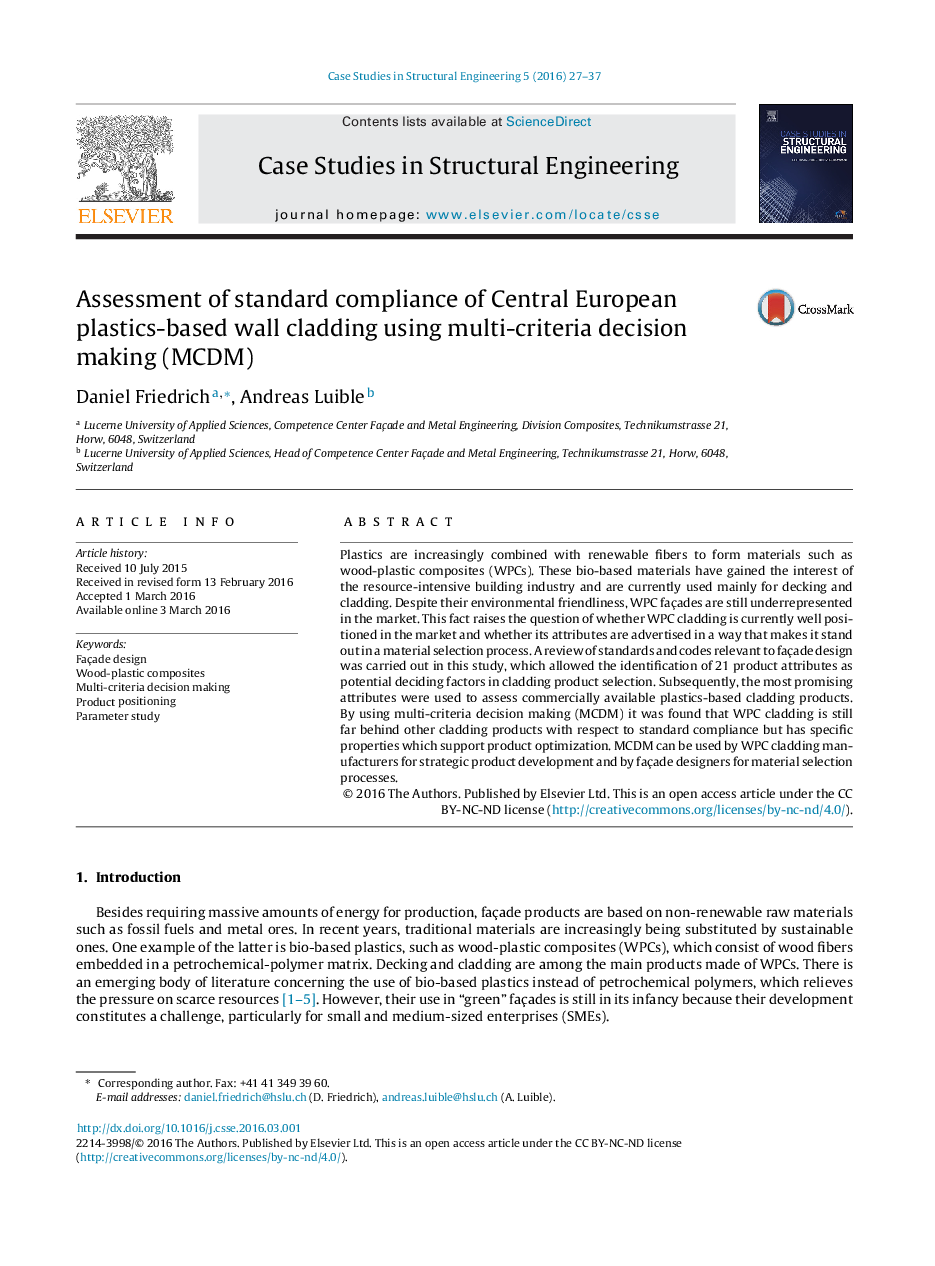| Article ID | Journal | Published Year | Pages | File Type |
|---|---|---|---|---|
| 250592 | Case Studies in Structural Engineering | 2016 | 11 Pages |
•Multi-criteria decision making (MCDM) can be used for assessing the standard compliance of plastics-based cladding products.•The assessment should focus on attributes which most attract the attention of façade planners.•Non-linear ranking supports concentrating on a small number of attributes.•Approvals serve as objective source from which appropriate attribute weights can be derived.•The weighted-sum-method (WSM) quantifies the existing gap between wood-plastic composites and the most regulated product.
Plastics are increasingly combined with renewable fibers to form materials such as wood-plastic composites (WPCs). These bio-based materials have gained the interest of the resource-intensive building industry and are currently used mainly for decking and cladding. Despite their environmental friendliness, WPC façades are still underrepresented in the market. This fact raises the question of whether WPC cladding is currently well positioned in the market and whether its attributes are advertised in a way that makes it stand out in a material selection process. A review of standards and codes relevant to façade design was carried out in this study, which allowed the identification of 21 product attributes as potential deciding factors in cladding product selection. Subsequently, the most promising attributes were used to assess commercially available plastics-based cladding products. By using multi-criteria decision making (MCDM) it was found that WPC cladding is still far behind other cladding products with respect to standard compliance but has specific properties which support product optimization. MCDM can be used by WPC cladding manufacturers for strategic product development and by façade designers for material selection processes.
